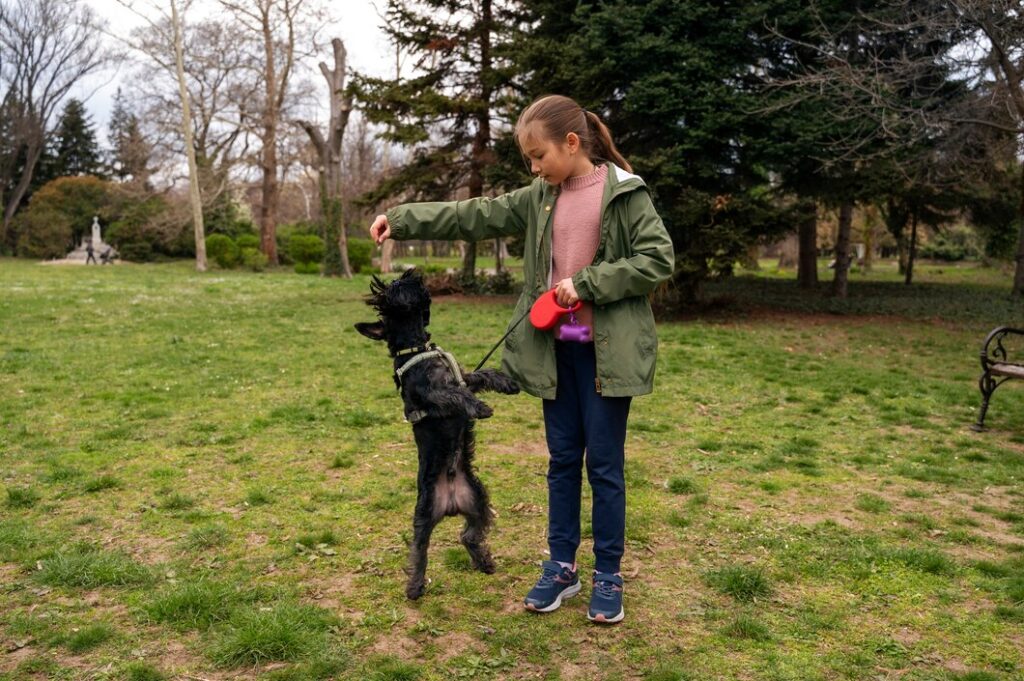Have you ever struggled with your dog’s behaviour? Can you teach your pet good habits while ensuring their safety? Training your dog can be challenging, but the right tools can make a difference. Whether your furry friend pulls on the leash or has difficulty following commands, a well-designed training approach can help you achieve results.
Dogs naturally want to please their owners, but sometimes, they need a little guidance. That’s where dog training collars come into play. These tools can be the bridge between you and a well-behaved dog. But how do they work, and are they the right choice for your
Different Types of Training Collars
There are several types of training collars to consider. Each one serves a distinct purpose, depending on the behaviour you want to correct. Let’s explore a few of the most common options.
Remote Training Collars
They use a handheld remote to deliver signals to your dog. Remote are highly effective for teaching commands or controlling behaviour from a distance. They are often used when distractions make it difficult for your puppy to focus.
Vibration Collars
Vibration provides a non-shock alternative for pooch owners who prefer gentle methods. When activated, they deliver a mild vibration that alerts your dog. This is often enough to interrupt undesirable behaviour, such as barking or running off during a walk.
Citronella Collars
Citronella can be an effective deterrent for dogs who bark excessively. When the canine barks, a harmless mist of citronella is sprayed on it, discouraging the action. Since dogs find the scent unpleasant, they quickly learn to avoid triggering the collar.
Static Correction Collars
Often misunderstood, static correction collars use a mild electric pulse to grab the attention. They are not designed to hurt the animal but to create a sensation that stops undesirable actions. When used correctly, they can be a highly effective training tool.
How to Use Training Collars Safely
Safety should always be the top priority when using any training device. Dog owners must ensure they use them responsibly and never leave them on their pets for extended periods. Choosing the correct setting based on your canine’s size and temperament is also crucial.
Overuse or improper use can lead to discomfort or confusion, making the training process less effective. Before introducing them, spend time teaching your pooch basic commands. They should complement—not replace—traditional training techniques like positive reinforcement.
The Benefits of Training Collars
There are numerous benefits to using training collars when they are used correctly.
Improve Communication with Your Dog Easily and Effectively: Dogs need a direct way to communicate commands, which helps them understand expectations clearly and quickly.
Accelerate Your Dog’s Learning Process for Better Behavior: They help dogs understand acceptable actions more quickly. Your canine will quickly grasp what is right and wrong.
Maintain Control Over Your Dog Even at a Distance: Training collars allow commands to be reinforced from afar, ensuring control no matter the environment or situation.
Keep Your Dog Safe in Potentially Risky Situations: They help prevent dangerous behaviours. They provide an extra layer of protection for your pet in challenging scenarios.
Dog training collars are effective for improving obedience and overall behaviour in hounds. While training collars should never replace positive reinforcement methods, they can be an excellent addition to your training routine. Ultimately, the right one can help create a well-behaved and happy dog, giving you and your furry companion peace of mind. With consistent use, they can foster a stronger bond between you and your pet.

